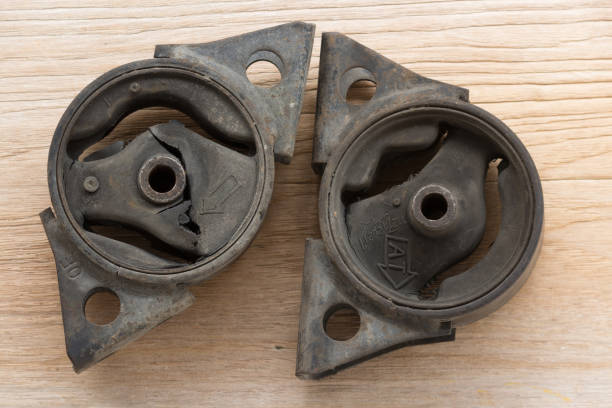
Engine mounts play a crucial role in your car’s overall performance and stability. They help to hold the engine in place and prevent vibrations from affecting the rest of the vehicle. In this comprehensive guide, we will explore the importance of engine mounts, the different types available, how they work, common symptoms of faulty engine mounts, and how to maintain them properly.
The Importance of Engine Mounts
Supporting the Engine
Engine mounts provide much-needed support to the engine, ensuring it stays in the correct position within the engine bay. This support is vital as it prevents the engine from shifting or moving during acceleration, deceleration, or while driving on rough terrain. Proper engine support is essential for optimal performance and preventing potential damage to other components of the vehicle.
Reducing Vibrations and Noise
Engine mounts are designed to absorb and dampen vibrations caused by the engine’s operation. By reducing these vibrations, engine mounts help create a smoother and quieter ride for both the driver and passengers. Additionally, they contribute to the overall comfort and enjoyment of the driving experience.
Types of Engine Mounts
Rubber Mounts
Rubber engine mounts are the most common type found in vehicles. They consist of a metal frame encased in rubber, which helps to dampen vibrations and provide support. Rubber mounts are relatively inexpensive and offer good vibration isolation. However, they can wear out over time and may need to be replaced periodically.
Hydraulic Mounts
Hydraulic engine mounts, also known as fluid-filled mounts, offer improved vibration dampening compared to rubber mounts. They contain a liquid, usually a combination of water and glycol, which helps to absorb vibrations more effectively. These mounts are commonly used in luxury and high-performance vehicles where a smoother, quieter ride is desired. However, they can be more expensive and may develop leaks over time.
Polyurethane Mounts
Polyurethane engine mounts are a popular aftermarket option for performance enthusiasts. They provide increased stiffness compared to rubber mounts, which can result in better engine stability and reduced movement. This can be advantageous for vehicles with modified engines or those used in high-performance applications. However, the increased stiffness can lead to a harsher ride and more noticeable vibrations.
Common Symptoms of Faulty Engine Mounts

Excessive Vibrations
One of the first signs of a failing engine mount is increased vibrations felt inside the cabin, especially while accelerating or driving at low speeds. As the mount wears out or fails, it loses its ability to dampen vibrations effectively.
Unusual Noises
A damaged or failing engine mount may cause clunking or banging noises during acceleration, deceleration, or when driving over bumps. These noises occur as the engine shifts within the engine bay and comes into contact with other components.
Misaligned Engine
If an engine mount fails completely, the engine may shift out of its proper position, causing it to sit lower or at an angle. This misalignment can lead to damage to other components, such as the exhaust system, and may also affect the vehicle’s overall performance.
Increased Engine Movement
Excessive engine movement can be a sign of a worn or damaged engine mount. This movement can be observed when revving the engine in neutral or during gear changes. Increased engine movement can cause damage to surrounding components and may also affect the vehicle’s drivability.
Maintaining and Replacing Engine Mounts
Regular Inspections
To ensure the longevity of your engine mounts, it’s essential to perform regular inspections. Check for signs of wear, such as cracks or deformation in the rubber, and look for leaks in hydraulic mounts. Any signs of damage should be addressed immediately to prevent further issues.
Professional Assistance
Replacing engine mounts is a complex process that often requires professional expertise. If you suspect your engine mounts are failing, it’s best to have your vehicle inspected by a trained mechanic. They can diagnose the problem accurately and advise on the best course of action.
Quality Replacements
When it’s time to replace your engine mounts, it’s crucial to choose quality replacements. While cheaper options may seem appealing, they can wear out more quickly and fail to provide the necessary support and vibration dampening. Investing in quality engine mounts can lead to better performance, increased comfort, and fewer replacements in the long run.
Conclusion
Engine mounts are a vital but often overlooked component of your vehicle. They provide essential support to the engine, absorb vibrations, and contribute to a smoother, quieter ride. Regular inspections and maintenance, along with prompt replacement when necessary, can ensure your engine mounts continue to perform their function effectively. By understanding the role of engine mounts and how to care for them, you can enhance your vehicle’s performance and extend its lifespan. Always remember, your vehicle’s performance is as good as the care and maintenance you provide.








